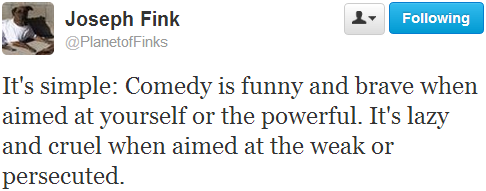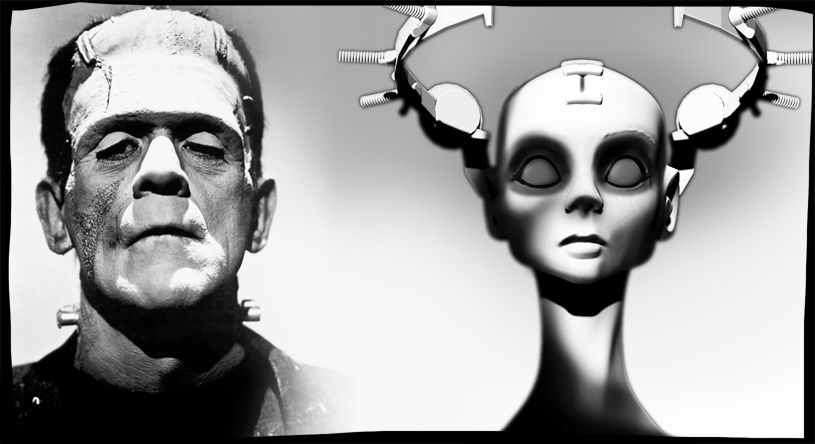I'm not really a good person
I'm not bad person either.
I'm more like... chaotic neutral.
I started working on Belladonna in early 2013, and shortly after that Anita Sarkeesian began releasing her Tropes vs. Women in Video Games series. This means that by the time I watched the first episode I already had the whole story and all the characters of Belladonna planned out. Since then every new episode has presented me with new tropes and terminology, and admittedly Belladonna features practically every single one of these toxic tropes.
But! I have worked hard from the very start to make sure that it is an upside-down take on them.
I have a damsel-in-distressed character. She is even damsel'd twice.
However, the first time she engineers her own escape. She observes her situation, identifies an opportunity, formulates a careful plan and executes it to win her freedom.
Her new-won freedom is short-lived, and being the damsel she is she soon finds herself once again incapacitated by an external force. And this time she can only sit around and wait for her rescuer.
However, her rescuer is another woman!
And I do have a Woman in a Refrigerator - an underdeveloped female character whose only purpose is to get killed off and thus trigger the events of the main story. This character is mentioned briefly with a name, and presented as a love interest, but nothing much is said about her before she is murdered in cold blood just to anger and provoke her lover.
However, this is a story about bringing the dead back to life, after all, and this refrigerator'd woman later turns out to be the primary agent of the whole narrative!
Saarkasien's latest video is about Ms Male Characters and the Smurfette principle. Belladonna uses these tropes as well. (Although no character will wear a pink or purple bow!)
The very first thing that happens in the game is that you are presented with a female version of Frankenstein's monster. You are given some back-story, which also mentions a female Frankenstein, and the natural assumption is that they are the same person, since a game like this with as much as two interesting female characters is, in your prior experience, very unlikely. But what is the Smurfette is not in fact a Smurfette? What if there is more than one woman in this story? And if they both are female versions of a male Frankenstein's monster, how is it that they are different from each other, unless they actually have other character traits than "being a woman"?
I'm walking on dangerous ground here. Sarkeesian's general advice seems to be to avoid damsels-in-distress altogether and make games about other things. I am going the opposite direction, choosing to add a damsel on purpose and use the tropes to prove a point.
But who am I to handle delicate issues like this?
If you only play through the first half of Belladonna, lose interest and leave it, the game will appear really sexist and regressive. If you only see the part where the problems are presented, and skip the part where they are discussed, they will simply look like problems.
Moreover, if I fail to present the discussion part properly, and do not manage to provoke the player to analytic thought, similar scenario occurs.
I am not really a good person. I do not have great empathy, or a genuine interest in other people and their well-being. My approach to issues like these comes from the other axis of the D&D chart.
Not from Good or Evil, but from Lawful or Chaotic.
Like many indie game developer I want to be provocative, questioning and anarchistic. But here's the thing:Edmund McMillen, of Team Meat and Super Meat Boy, talks about this desire in Indie Game the Movie, and as example of provocative game design we are shown his earlier game "Cunt". In this game you play as a disembodied penis firing projectiles at a grotesque monster vagina in the centre of the screen.
Does it upset the player? Yes.
Does it force the player to rethink her values? No.
This game only serves to reinforce the patriarchy and the rape-culture that we already have going. The penis is a brutal agent, and the vagina a passive and alien enemy. You may think you are chaotic, but you are simply following the already establish laws.
Joseph Fink, creator of the Welcome to Nightvale podcast, puts it like this:

This is why I whole-heartedly support Sarkeesian's cause. Because it is a challenge to game developers to rise up and change the medium, to question the established order and revolutionize the industry. Because following the same old patterns is lazy and cowardly, and if you truly want to be innovative and forward-thinking, these are the sort of systems you have to question.
And as an effect, a lot of people, of all genders and demographics, will also be a lot happier after the change. I guess that's nice too.




